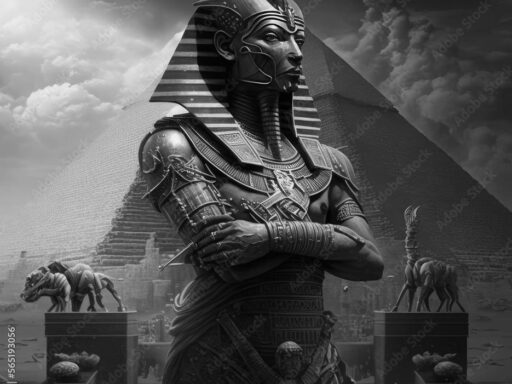Dr. Dre’s “Still D.R.E.” emerges as a pivotal statement affirming his sustained relevance and influence in hip-hop after a challenging period in his career. Released in 1999, the track marked Dre’s return to the forefront of rap and production, dispelling doubts about his ability to deliver hit music amid changing industry dynamics and prior setbacks.

The song arrives after Dr. Dre’s early rise through the late 1980s and early 1990s as a founding member of N.W.A. This group helped popularize West Coast gangster rap by vividly portraying the harsh realities of life in Compton, California. Known for their explicit lyrics and raw themes on gangs, police brutality, and violence, N.W.A’s music sparked controversy and acclaim. Their break-up in the early 1990s, due to management conflicts, led Dre to embark on a solo journey.
Dre’s debut solo album, The Chronic (1992), shifted gangsta rap by incorporating funk influences from artists like Parliament-Funkadelic, creating the G-Funk sound. This album launched stars such as Snoop Dogg and produced iconic tracks like “Nuthin’ but a ’G’ Thang.” Dre gained significant critical acclaim, Grammy nominations, and MTV exposure, positioning him as an influential producer and rapper.

The momentum continued with projects under Death Row Records, co-founded by Dre and Suge Knight, where Dre produced hits for artists like Tupac Shakur. The peak of this era included “California Love,” a major hit featuring Tupac, Dre’s production, and co-writing. This period coincided with the violent East Coast-West Coast rivalry that defined mid-1990s hip-hop.
However, tensions with Suge Knight led to Dre’s departure from Death Row by 1996. Afterward, Dre founded Aftermath Entertainment. Early releases under Aftermath, including his 1996 compilation Dr. Dre Presents the Aftermath, and production efforts with The Firm did not meet commercial or critical expectations. Dre’s dominance seemed to wane, especially as the deaths of Tupac and Notorious B.I.G. affected the hip-hop community deeply.

A key challenge was Suge Knight’s efforts to sabotage former Death Row artists. For example, Dre’s second solo album faced title issues when Knight released a rival compilation named Chronic 2000, forcing Dre to rebrand his upcoming project.
“Still D.R.E.” serves as an explicit response to these challenges and criticisms. The opening lines—“My last album was ‘The Chronic’/They want to know if he still got it”—directly confront doubts about Dre’s consistency and capability. The song asserts that despite the hiatus and setbacks, Dre remains a potent force in hip-hop.

Crucially, Dre’s career revival is linked with his signing and producing of Eminem in 1998. Eminem’s debut, The Slim Shady LP, achieved massive success with hits like “My Name Is” and “Guilty Conscience,” underscoring Dre’s status as a top producer. This collaboration reinvigorates Dre’s image and leads into his impactful second solo album, 2001 (also referred to as The Chronic 2001), featuring “Still D.R.E.” and other hits such as “Forgot About Dre.”
Released in 1999, 2001 became the fifth best-selling album of the year and was certified six times platinum. It reestablished Dre’s dominance and influence, blending classic G-Funk elements with contemporary sounds. “Still D.R.E.” became an anthem celebrating his enduring legacy and production strength.

| Phase | Key Events | Impact |
|---|---|---|
| N.W.A Era (Late 80s – Early 90s) | Gangsta rap pioneer; controversial lyrics; group breakup | Laid foundation for West Coast rap; widespread influence |
| Solo Debut & G-Funk (1992-1994) | The Chronic released; launched Snoop Dogg; Grammy nods | Created signature G-Funk sound; commercial & critical acclaim |
| Death Row & Tupac (Mid 90s) | Produced hits like “California Love”; East vs West rap rivalry | Heightened visibility; cultural impact; rivalry tension |
| Aftermath Launch & Challenges (1996-1998) | Left Death Row; mixed reviews; industry downturn post Tupac/Biggie deaths | Questioned Dre’s relevance; difficult commercial phase |
| Comeback & “Still D.R.E.” (1999) | Signed Eminem; released 2001; reasserted dominance | Returned to top form; multi-platinum album; iconic track |
- “Still D.R.E.” directly addresses skepticism about Dre’s ability to maintain his success.
- The track forms part of Dre’s comeback after a period of industry struggles and personal conflicts.
- Dre’s collaboration with Eminem was critical to restoring his career momentum.
- The album 2001 signaled Dre’s revitalization, blending old-school and contemporary sounds.
- The song affirms Dre as a lasting figure in rap, not a relic of the past.
What Was the Context Around Dr. Dre’s Still D.R.E.?
“Still D.R.E.” is more than a catchy beat and a memorable hook; it’s Dr. Dre’s bold statement of survival and dominance in rap after a turbulent period. It serves as his comeback—an announcement that despite years of setbacks and industry battles, the sound kingpin hasn’t missed a beat.

So, what exactly set the stage for this iconic track? Let’s unpack the juicy details behind the making of “Still D.R.E.” and why it matters so much.
The Early Days: From NWA to G-Funk Stardom

To understand “Still D.R.E.”, you have to go back to where Dre made his name: Compton, 1980s, as part of NWA. This group pioneered gangster rap, painting gritty pictures of street life, police violence, and survival. Their raw, unapologetic style shook the music scene and pushed boundaries—earning both fame and controversy.
Tracks like “Fuck Tha Police” were punk rock in spirit, loudly calling out systemic brutality. NWA made waves, but internal conflicts and money fights led the group to split by the early ‘90s. Each member went their own way, but Dr. Dre’s solo journey was just beginning.
In 1992, Dre dropped The Chronic, introducing a funkier sound dubbed “G-Funk.” Smooth, laid-back beats blended with sharp street tales. Hits like “Nuthin’ but a ‘G’ Thang” turned heads and gave birth to a new wave of West Coast rap superstar Snoop Dogg. This period also saw Dre expand his influence producing for other artists, solidifying his Midas touch.
The Death Row Era and Tupac’s Rise
Dre’s success came under Death Row Records, co-founded with Suge Knight. While Dre focused on music, Suge maneuvered the business side—and the industry heat. They supported rising stars like Tupac Shakur, whose “California Love,” produced and co-written by Dre, became an anthem tying together their collective dominance.
This time wasn’t just about music, though. The late ‘90s marked the infamous East Coast-West Coast rivalry, with Bad Boy Records and Notorious B.I.G. trading lyrical battles with Death Row names. Things became tense, and the rap world watched anxiously.
Leaving Death Row: The Highs and Lows
By 1996, Dre split from Death Row due to growing friction with Suge Knight—a power struggle that couldn’t be smoothed over. Starting fresh, Dre launched Aftermath Entertainment later that year. But the initial releases—“Dr. Dre Presents the Aftermath” and an album for The Firm—flopped critically and commercially.
The magic seemed to have faded. Fans whispered “Has Dre lost it?” Meanwhile, Suge Knight, not keen on letting go, allegedly sabotaged Dre’s projects. Even the album title “2001” was a tweak forced by Suge’s earlier “Chronic 2000.”
Around this time, the rap world also endured losses with the deaths of Tupac and Notorious B.I.G., adding to the sense of uncertainty in the industry.
Back in the Spotlight: Eminem and Aftermath’s Revival
Dre’s fortunes shifted when he signed Eminem in 1998. Producing tracks like “My Name Is” on Eminem’s Slim Shady LP, Dre became part of a fresh wave that captivated audiences and critics alike. The collaboration reignited Dre’s reputation for spotting and crafting hits.
In 1999, Dre dropped his official second solo album, 2001. This album threw down undeniable heat with singles like “Forgot About Dre” and the ever-iconic “Still D.R.E.” The latter directly addressed critics who claimed Dre had lost his touch. The lyrics, “Still D.R.E.” repeated over a hypnotic piano riff, reminded everyone: Dre was back—and better than ever.
The album sold millions, achieved multi-platinum status, and earned multiple Grammy nominations. Dre reclaimed his throne, proving the doubters wrong.
What Makes “Still D.R.E.” So Significant?
At its core, “Still D.R.E.” is a power move disguised as a chill anthem. It’s Dre’s way of saying, “I haven’t forgotten where I came from, nor have I lost my genius.” The song’s lyrics nod to past successes while dismissing haters who claim he’s faded away.
Dr. Dre’s clever use of repetition and contrast beats makes the track memorable and an anthem for resilience. It’s like telling the whole world, “I’m still here, and I’m still the king of this game.”
The Secret Sauce: Collaboration and Production
Of course, “Still D.R.E.” wouldn’t be what it is without its collaborators. The song features Jay-Z, another titan from the East Coast scene. His presence bridges a divide formed during the East Coast-West Coast rivalry, signaling a truce of sorts and uniting hip-hop fans.
The production is classic Dre: minimal, crisp, and hypnotic piano keys looping over a deep, driving bassline. This style contrasts with his earlier G-Funk epoch but retains his signature smoothness. The beat feels like a slow groove, inviting listeners in but commanding respect.
Why Should Fans Care About the Context?
Understanding the backstory adds layers to the experience of listening to “Still D.R.E.” It’s not just a song; it’s a narrative—one about battles, resilience, reinvention, and ultimate triumph. This awareness transforms the track from a catchy tune into a milestone in hip-hop history.
It reveals Dre not just as a beat maker or rapper, but as a strategist who navigated a volatile industry, overcame rivals and setbacks, and came back swinging.
Practical Takeaways and Lessons from Dre’s Comeback
- Adapt and Innovate: Dre didn’t just repeat success with old formulas. After “The Chronic,” he allowed his sound to evolve, incorporating new elements that fit the late ‘90s landscape.
- Build Strategic Alliances: Signing Eminem—not an obvious choice then—proved instrumental. Finding and nurturing talent can redefine your career.
- Handle Setbacks with Patience: Dre’s slump after Death Row shows even giants face dips. He didn’t panic but kept working behind the scenes.
- Use Music as a Response: “Still D.R.E.” is a direct lyrical response to critics—turning negativity into motivation can resonate strongly with audiences.
A Final Word: Does Dre Still Got It?
After dissecting the full context, the answer is a clear yes. “Still D.R.E.” isn’t just a title; it’s a bold declaration. Despite industry upheavals, personal conflicts, and fierce competition, Dr. Dre remains a formidable force. His story is proof that real talent and determination endure beyond hype and hardship.
So next time you hear those iconic piano keys ring out, remember—they signal more than music. They’re the voice of resilience, crafted by a legend who truly is still D.R.E.
What issues led to Dr. Dre leaving Death Row Records?
Dr. Dre left Death Row due to disagreements with Suge Knight. The conflicts included management disputes and creative control issues.
How did “Still D.R.E.” serve as a statement for Dr. Dre?
The song confirmed Dre’s return to music after years away. It addressed critics doubting his relevance and reminded fans he still had his skills.
What role did Eminem play in Dr. Dre’s comeback?
Dre signed Eminem in 1998. Producing hits like “My Name Is” boosted both their careers. This success helped Dre gain momentum for his own comeback album.
Why was Dr. Dre’s album titled “2001” instead of “Chronic 2000”?
Suge Knight released a compilation called “Chronic 2000” to block Dre. This forced Dre to rename his album “2001” to avoid confusion and legal issues.
How was the East Coast-West Coast rivalry connected to Dr. Dre’s career?
The rivalry defined the mid-90s rap scene. Dre was a West Coast leader with Death Row, facing off against East Coast rappers like Notorious B.I.G. and Puffy.
Why did Dr. Dre’s projects after leaving Death Row initially struggle?
After departing, Dre’s compilation album and The Firm’s release failed critically and commercially. The deaths of Tupac and Biggie also slowed the industry’s momentum.




